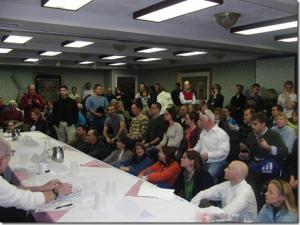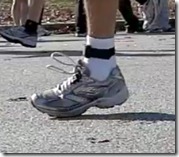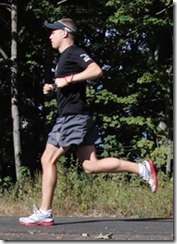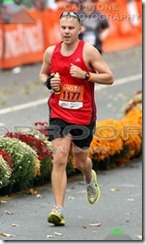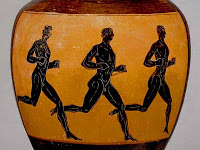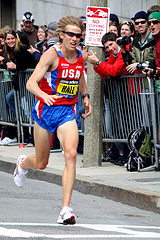The running science blogosphere has been popping over the past few weeks with articles touching on various aspects of the role of stride rate in running, particularly how it relates to both running speed and injury prevention. Here’s a quick summary of some of the relevant posts: 1. Back on February 5, I wrote a […]
Stride Rate, Stride Length, Overstriding, and Minimalist Running Form
Vertical Impact Loading Rate in Running: Post #2 from Jay Dicharry of the UVA Speed Lab
Yesterday I published a post on the topic of vertical impact loading rate in running – sounds like a complex topic, but in reality it simply represents how quickly you impact the ground when you run. The topic has gained a lot of interest among scientists lately as recent research has suggested that higher loading […]
Shepherdstown, West Virginia: A Natural Running Community
I spent this past weekend at the National Conservation Training Center in Shepherdstown, WV, a small town tucked along the Potomac River near the border with Maryland. Though I have spent time in West Virginia in the past, I’d never been to Shepherdstown, and thus knew very little about it. My reason for traveling to […]
The Variable Running Footstrike: Pictures of Heel, Midfoot, and Forefoot Strikes
Over the past year I have written quite frequently on the topic of footstrike in running. Simply defined, footstrike represents the moment of initial contact of the foot with the ground, and individual footstrikes are typically categorized in the scientific literature (e.g., Hasegawa, 2007) in one of three ways : 1. rear-foot or heel strike, […]
Slow Motion Video of Elite Women at the 5th Avenue Mile Road Race
Steve Magness over at the Science of Running blog has a nice post up analyzing foot strike patterns of elite female runners from the recent 5th Avenue Mile race in New York City based on a high-speed video shot by Niell Elvin. He notes that 11 of the 15 women strike either on the midfoot […]
Changing Running Form – My Journey to the Midfoot
If you’ve been following this blog for the past few months, you’re probably aware that I’ve developed a deep interest in the topic of running form, and have spent a good amount of time working to modify my own form to a shorter, quicker stride with a midfoot landing. Well, after a long process and […]
Running Form, the Origin of Minimalism, and the Elite vs. Recreational Divide
I love when I read something that makes me think – that’s exactly what happened when I read Steve Magness’ latest post on his Science of Running blog. In his post, Steve discusses his perspective on how we arrived at our current state of affairs with regard to running shoe design, how this relates to […]
Newton Panel Discussion on Natural Running Form and Shoes: This is a Must Listen
I’d like to use this post to point you to some excellent discussions of running form and running shoes that have come out in the past few weeks. First and foremost, Newton Running recently sponsored an excellent panel discussion on natural running form and running shoes in Colorado. The panel included Dr. Irene Davis PhD, […]
A Contrast in Form: Variable Running Gaits at the 10K Mark of a Marathon/Half-Marathon
Sometimes a simple video can speak louder than words or any research study. Last Fall some of my students and I filmed nearly all of the runners in the Manchester City Marathon and Half-Marathon as they passed both the 6-mile (marathoners and half-marathoners) and 20-mile marks (marathoners only) of the race. The video below was […]
On Running Form II: Where Should Footstrike Occur?
Running coach and exercise physiologist Steve Magness of the Science of Running blog recently put up a long, thorough post explaining his thoughts about “How to Run.” One of the things I found interesting about his post was his discussion of the use of “cues” to help one improve running form. Often, as Magness admits, […]
On Running Form, Variability in Elites, and What it Means to You (and Me)
Image by -nanio- via Flickr If there is one thing that I have learned in 15+ years of teaching and studying biology, it’s that variation is the norm rather than the exception. Variability is the reason why biology is sometimes called the “sloppy science,” and it’s the reason why undergraduate biology majors at my college […]
How to Run: A Biomechanical Approach by Steve Magness
Earlier this week I posted a quote from and interview Amby Burfoot conducted with famed runner and coach Alberto Salazar in which Salazar was quoted as saying: “There has to be one best way of running. It’s got to be like a law of physics. And if you deviate too much from that–the way I […]



